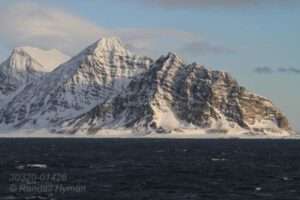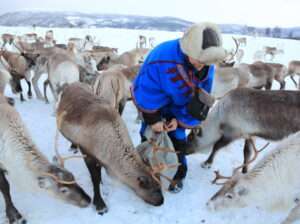Randall Hyman
- 2015

Fellowship Title:
- High Stakes at High Latitudes: Climate Change in the Norwegian Arctic
Fellowship Year:
- 2015

Arctic Treaty Nears 100 in Heated Climate
The Svalbard archipelago sits halfway between Norway and the North Pole with strategic access in the Barents Sea to vital sea lanes linking Russia, Western Europe and North America.

Methane: Arctic Promise and Peril
Consigned to my bunk all night by gut-wrenching seas, I wistfully thought back to terra firma on mainland Norway a few days earlier. Before boarding the University of Tromsø’s research ship, R/V Helmer Hanssen,

On The Edge: Reindeer and Climate Change
Female reindeer stands protectively beside her calf. Text and photos by Randall Hyman TROMSØ, NORWAY – “When I got married two years ago, we invited 1400 people,” Berit Oskal-Somby told me as we stood in an icy coastal pasture in northern Norway surrounded by 1500 reindeer, “but only 1000 came.” When I asked, astonished, how she had provided dinner for so many guests, she swept an arm toward the herd before us and said with an amused smile, “You are looking at it.” In many ways, reindeer are the symbol of Oskal-Somby’s people, known as the Sami within Norway and as Lapps across the border in Sweden and Finland. Less than 10% of the 50,000 Sami living in northern Norway still herd reindeer, and that number continues to dwindle as climate change, predators and habitat loss make this traditional livelihood steadily more difficult. Oskal-Somby works at the Sami parliament, but in late January 2015 she and her extended family gathered for an unusual event. All hands were on deck to corral reindeer stranded by unseasonal

Meltdown: Vanishing Polar Ice
“What you are looking at,” lamented marine biologist Haakon Hop of the Norwegian Polar Institute, “is the melting of the Arctic Ocean.”
Nearing 82 degrees north latitude aboard the research ship RV Lance in late July 2013, we were just 500 miles shy of the North Pole.
